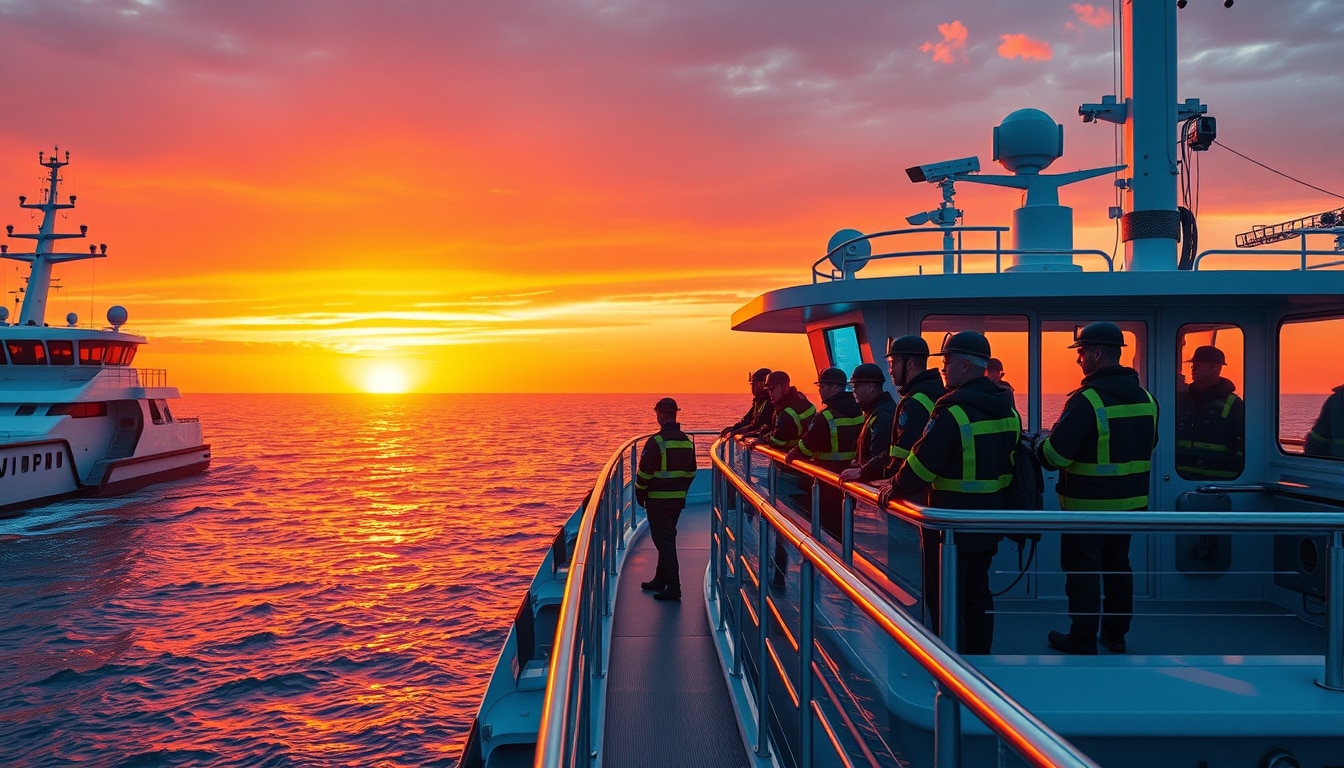In today’s interconnected world, meeting international standards is more crucial than ever, especially in the realm of maritime training. Organizations are seeking professionals who not only possess the necessary technical skills but are also equipped with a global mindset to tackle the challenges of an evolving industry. At the Virtual Maritime Academy, we pride ourselves on delivering a DNV Certified PFSO Course designed to empower individuals with the knowledge and competencies required to excel in the maritime field. Our course is not just about meeting regulations; it’s about preparing you for global challenges. In this article, we will delve into the importance of understanding international standards in education, the core competencies developed through our course, inspiring success stories from our esteemed alumni, and future trends emphasizing the necessity of global readiness.
Learn More about our PFSO/MFSO Course!
Key Takeaways
- International standards in education are essential for preparing students for a globalized workforce.
- The course focuses on developing core competencies needed for success in international environments.
- Real-life case studies showcase the achievements of alumni who have thrived globally after completing the course.
- Anticipating future trends ensures that students are equipped to meet emerging global challenges.
- Being globally ready is crucial for career advancement and impacting communities worldwide.
Understanding International Standards in Education
In today’s interconnected world, meeting international standards is crucial for professional growth and career advancement, particularly in the maritime industry. The Virtual Maritime Academy stands out as a DNV Certified Maritime Training Provider, ensuring that our programs consistently meet rigorous global benchmarks. Our PFSO Course, also DNV Certified, provides comprehensive training that equips participants with the necessary skills to navigate the complexities of port facility security. By incorporating international standards into our curriculum, we not only prepare you for immediate challenges in the maritime sector but also position you as a competitive candidate in the global workforce. Understanding these standards is vital for anyone looking to make a meaningful impact in their profession, and our dedicated training is designed to facilitate this essential learning journey.
Core Competencies Developed Through the Course
In today’s dynamic maritime industry, professionals must stay ahead by acquiring essential skills that meet international standards. At Virtual Maritime Academy, our PFSO (Port Facility Security Officer) Course stands out as a DNV Certified program, meticulously designed to equip participants with the core competencies necessary to tackle global challenges in maritime security. This course not only emphasizes the importance of compliance with international regulations, but also cultivates critical thinking, risk assessment, and crisis management skills. Participants learn to conduct security assessments, develop port facility security plans, and implement continuous improvement processes—ensuring they are well-prepared to uphold security protocols in any maritime environment. As the demand for highly qualified maritime personnel rises, engaging in professional development through DNV Certified training like our PFSO Course will significantly enhance your career readiness and effectiveness in addressing international maritime security issues.
Learn More about our PFSO/MFSO Course!
Case Studies: Success Stories from Our Alumni
At Virtual Maritime Academy, we pride ourselves on being a DNV Certified Maritime Training Provider, ensuring that our courses not only meet but exceed international standards in maritime education. One of our standout offerings, the Port Facility Security Officer (PFSO) course, is DNV Certified, equipping professionals with the skills needed to tackle global maritime security challenges effectively. Our alumni have taken these lessons far and wide, becoming invaluable assets in their respective organizations. For instance, after completing the PFSO course, one graduate successfully implemented enhanced security protocols in a busy port facility, significantly reducing unauthorized access incidents. Another alumna leveraged her training to develop a comprehensive risk assessment strategy that garnered praise during international audits. These success stories underscore how Meeting International Standards: How Our Course Prepares You for Global Challenges is not just a tagline; it’s the foundation of our approach, ensuring graduates not only understand theoretical concepts but are also prepared to apply them in real-world situations. Join us as we explore more success stories from our alumni who are leading the way in maritime security and operational excellence.
Future Trends and the Importance of Global Readiness
In an increasingly interconnected world, the significance of meeting international standards cannot be overstated, particularly in the maritime industry. As global trade expands and regulations evolve, professionals in this sector must be equipped with the skills necessary to navigate complex challenges. At Virtual Maritime Academy, we prioritize this need, offering a comprehensive PFSO Course that is not only DNV Certified but also designed to empower you with the knowledge required to maintain safety and security in maritime operations. Our training prepares participants for potential global challenges, ensuring they are proficient in international regulations and best practices, thereby enhancing their ability to contribute effectively in any maritime environment. By understanding and implementing international standards, our graduates are ready to meet the demands of an ever-changing global landscape, demonstrating their commitment to excellence and professional growth.








